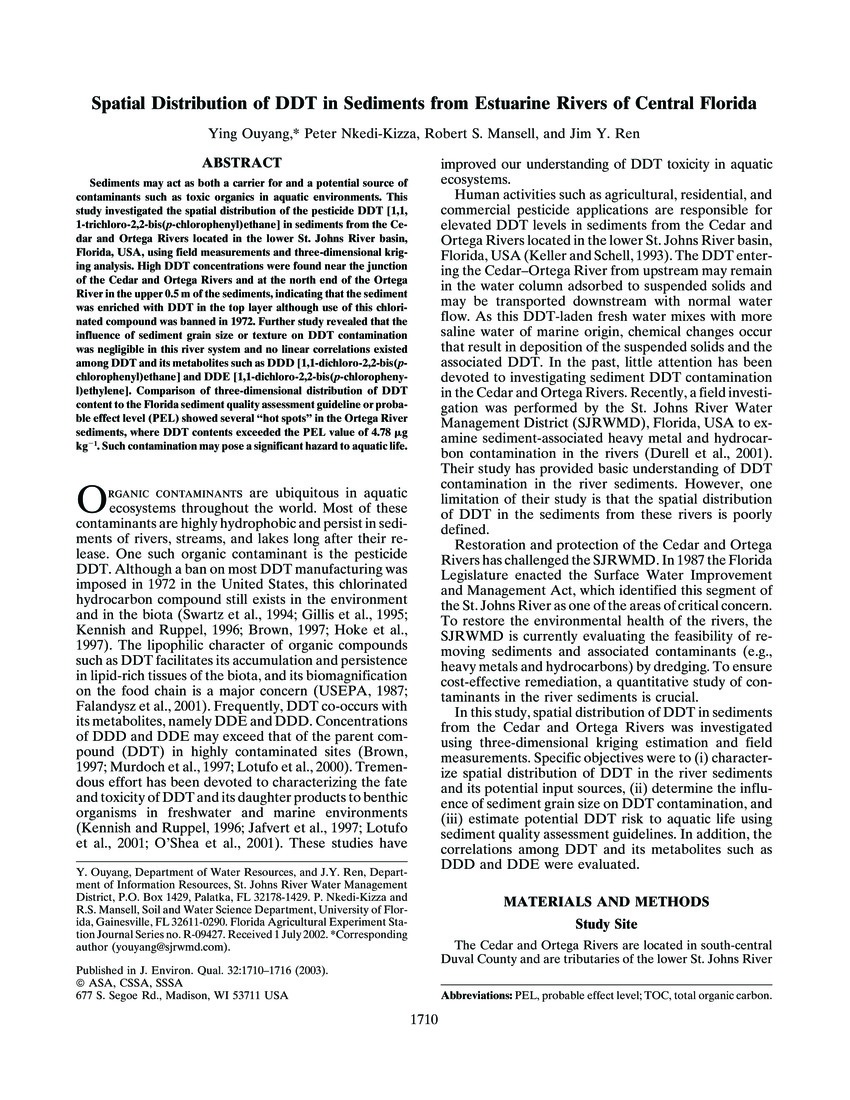Journal Article
AccessSpatial Distribution of DDT in Sediments from Estuarine Rivers of Central Florida
Sediments may act as both a carrier for and a potential source of contaminants such as toxic organics in aquatic environments. This study investigated the spatial distribution of the pesticide DDT [1,1,1-trichloro-2,2-bis(p-chlorophenyl)ethane] in sediments from the Cedar and Ortega Rivers located in the lower St. Johns River basin, Florida, USA, using field measurements and three-dimensional kriging analysis. High DDT concentrations were found near the junction of the Cedar and Ortega Rivers and at the north end of the Ortega River in the upper 0.5 m of the sediments, indicating that the sediment was enriched with DDT in the top layer although use of this chlorinated compound was banned in 1972. Further study revealed that the influence of sediment grain size or texture on DDT contamination was negligible in this river system and no linear correlations existed among DDT and its metabolites such as DDD [1,1-dichloro-2,2-bis(p-chlorophenyl)ethane] and DDE [1,1-dichloro-2,2-bis(p-chlorophenyl)ethylene]. Comparison of three-dimensional distribution of DDT content to the Florida sediment quality assessment guideline or probable effect level (PEL) showed several “hot spots” in the Ortega River sediments, where DDT contents exceeded the PEL value of 4.78 μg kg−1 Such contamination may pose a significant hazard to aquatic life.
Publisher - American Society of Agronomy
Subjects - Chemical, Dichlorodiphenyltrichloroethane, DDT; Tributary, Cedar River; Tributary, Ortega River; Lower St. Johns River; Sediment, River
Citation: Ouyang Y, Nkedi-Kizza P, Mansell RS, Ren JY. 2003. Spatial Distribution of DDT in Sediments from Estuarine Rivers of Central Florida. J. Environ. Qual.; 32(5):1710-1716 http://dx.doi.org/10.2134/jeq2003.1710
